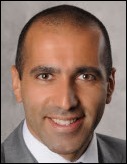The article about Pediatric Associates in CA has a nugget with a potentially outsized impact: the implication that VFC vaccines…
From the Consultant’s Corner 11/2/13
Change Management: The Path to EHR Clinician Adoption
Most of us are excited when we see provider order entry rates of 80-90 percent in our health systems. We should be proud of our users; it’s not an easy milestone to reach when transitioning from old systems or paper. Most of us also realize these target numbers are a poor indication of the overall performance and satisfaction of our clinicians. Let’s face it: we aren’t offering alternatives save for some scribes, emergent and transcribed orders, and perhaps we shouldn’t be.
Unhappy clinicians use the EHR because they have to. Happy adopters put the system to work for them, and demand results. They’re asking for the support to be efficient with the system, yet attentive with patients relevant and accessible data; timely, accurate and functional decision support; the ability to personalize tools and content; feedback mechanisms driving content localization and formulary adaptation reflecting site needs. Where to begin?
We have strategy meetings seeking readmission rate reductions, clinical integration improvement, population health programs, business intelligence platform development and much more. Are we doing all we can to support EHR usability and functional flexibility with a true governance backbone?
Many of us are re-evaluating our approach to satisfaction or just starting down the path of improving adoption of the EHR. I’d suggest focusing on four themes to manage the change, identify resistance and provide the incentive for meaningful adoption.
1. Improve governance alignment. Many of us have too many committees. While that may not change, we can certainly align our leadership and communication. The Physician Advisory Council, P&T committee, Medical Group leaders, Medical Executive Chair, clinical CXOs, and clinician champions should have a shared adoption agenda and prioritization for improving the EHR. Disconnects between these groups lead to stagnant or slow optimization. Is your vision and elevator story for leveraging technology across the care continuum transparent and similar across your executive teams? Including representation on your EHR interdisciplinary leadership team from these groups brings speed and competency to decision making. We must align our agenda (and re-evaluate team membership) to reach our goals. For those large multi-hospital multi-practice sites, invest in and support a local governance structure that mirrors your corporate team. Build strong bridges with your sites. Develop a reputation of responsiveness and alignment.
2. Develop adaptation guidelines. What does standardization, localization, and adaptation mean in your organization? How much control do your practice sites and hospitals have to flex and evolve your clinical content tools? We have resource limitations, though we can be transparent about our aims. Perhaps you have four lab systems and have yet to standardize the ancillary approach. Perhaps evidence shows different patient population-based medication response so certain formulary variation is valid. Perhaps sub-specialty scope of practice demands different EHR design or content. Clinical evidence may drive order set template creation and the EHR note format may be in a standard design, but don’t wait to be asked for the rules of engagement. Educate your users on the rules of change, who to work with on feedback and why it’s for the benefit of all. Do your sites know your adaptation guidelines?
3. Define user segments and training needs. One-size-fits-all training? Yawn! Technology-savvy residents expect the high-powered EHR. Some long-time clinicians fear the computer mouse. Know your audience, customize your training approach and build a segmentation tool to help. Key segments include your usual hospitalists, PCPs, specialists, surgeons, floor nurses and LPNs, though getting granular is important. Work with your department heads to identify potential super-users, resisters, folks needing basic computer training, and more. Segment those who may act as mentors. Segment those needing 1-1 training support. Identify rare admitters. Flag who will need refresher training. Educate your EHR training team on your new powerful knowledge about your clinician population, and put it to work as you develop curriculum, training classes and agendas. Track proficiency and follow up with refresher courses and e-learning.
Enable practice and personalization. These steps are often forgotten. Get your users in an EHR playground before going live, and even before upgrades. Assist their familiarity with the new features, workflows and tools, but make it valuable time spent. Provide support to personalize their toolsets in the production environment before going live. Help them modify their note templates, add orders to preference lists and create personalized order set templates before working with patients. On day 1, they’ll hit the ground running and appreciate that the system can work for them.
4. Strengthen post go-live communication. Some parents compare an EHR go-live to child-birth; the hard work is just beginning. While you’re going to have frequent newsletters, emails and MEC presentations leading up to an EHR launch, don’t slow down. Gather feedback directly from users to determine key challenges and to prioritize change. Make it easy for clinicians to give feedback by connecting with them in the physician lounge or accompanying them on rounds. Do more than providing an issue or ticket tracking system – stay connected in their world, on the units, in the clinics. Your CMIO and CNIOs should be familiar faces at your sites bringing updates, feedback and asking for more. For those leaders who always wanted to be in a band and go on a road show, you’ve got your shot.
Many of us have a future vision of powerful data warehouses, predictive analytics, evidence-based practice driving improved financial and clinical performance with improved patient satisfaction and care. We’ve seen the bells and whistles of EHR systems, and we have IT teams eager and ready. Let’s show our users we’ve heard them – how can you improve your clinician adoption?
Jaffer Traish is director of Epic consulting at Culbert Healthcare Solutions.

